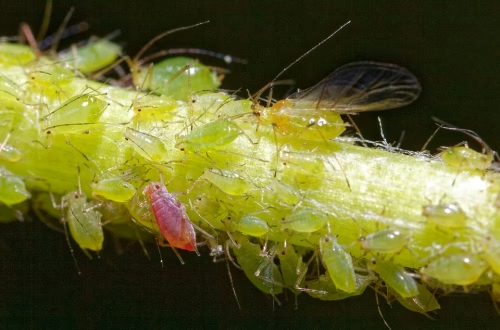Article Summary
Bug control is a critical aspect of maintaining a safe and healthy environment, affecting homeowners, renters, and business owners alike. This article addresses the specific challenges of identifying and managing bug infestations, the health and safety risks they pose, and the financial implications of untreated pest problems. Readers should care because timely and effective bug control can prevent serious health hazards, property damage, and regulatory non-compliance. By understanding the nuances of bug control, individuals can make informed decisions about prevention, treatment, and professional intervention.
What This Means for You
- **Immediate Action:** If you suspect a bug infestation, inspect common problem areas like kitchens, bathrooms, and basements for signs like droppings, nests, or unusual damage. Document the findings and contact a licensed pest control professional for an accurate assessment.
- **Health and Safety Risks:** Bug infestations can transmit diseases, trigger allergies, and cause respiratory issues. For example, cockroaches can spread Salmonella, while bed bugs can lead to skin infections and sleep disturbances. Untreated infestations exacerbate these risks.
- **Protecting Your Property:** Beyond discomfort, bugs can cause structural damage (e.g., termites), ruin stored goods (e.g., pantry pests), and reduce property value. Proactive pest management protects your investment and prevents costly repairs.
- **Long-Term Strategy:** Implement preventive measures like sealing entry points, maintaining cleanliness, and scheduling regular inspections. A long-term strategy ensures sustained pest control and minimizes future infestations.
10 Effective Ways to Keep Bugs Out of Your Home Naturally
What is Bug Control?
Bug control refers to the management and eradication of insect infestations in residential or commercial properties. It involves identifying the specific pest, understanding its behavior, and applying targeted treatment strategies to eliminate the problem and prevent recurrence.
General Principles of Pest Control
Integrated Pest Management (IPM) is a systematic approach that combines prevention, monitoring, and targeted treatment. IPM emphasizes minimizing pesticide use by focusing on non-chemical methods like sanitation, exclusion, and mechanical traps. Accurate identification of the pest species is crucial, as treatment methods vary widely.
DIY vs. Professional Pest Control
DIY methods, such as store-bought sprays or traps, can be effective for minor infestations. However, they often fail to address the root cause or handle severe infestations. Professional pest control services offer expertise, specialized equipment, and regulatory compliance, making them essential for persistent or complex pest problems.
Types of Infestations Common in Residential Properties
Ant Invasions
Ants are attracted to food and moisture. Signs include visible trails, nests, and foraging activity. Seal cracks, clean surfaces, and use bait stations to control infestations.
Cockroach Infestations
Cockroaches thrive in warm, damp areas like kitchens and bathrooms. Look for droppings, egg cases, and a musty odor. Maintain cleanliness, fix leaks, and use insecticidal sprays or baits.
Termite Damage
Termites cause structural damage by feeding on wood. Signs include mud tubes, hollow-sounding wood, and discarded wings. Professional treatment like soil treatments or bait systems is necessary.
Spider Issues
Spiders are often found in undisturbed areas like basements or attics. Remove webs, reduce clutter, and use sticky traps to manage populations.
Key Commercial Bug Control Challenges and Business Provisions
Businesses face unique challenges like food safety concerns, reputational damage, and regulatory non-compliance. Commercial pest control includes regular inspections, discreet service, and compliance with health and safety regulations. For example, food establishments must follow protocols outlined in the FDA Food Code.
Identification and Inspection Requirements
Accurate identification is critical for effective bug control. Common signs include droppings, nests, and damage. Inspect areas where pests are likely to hide, such as cracks, crevices, and damp spaces. Incorrect identification can lead to ineffective treatment and wasted resources.
The Professional Pest Control Process
- **Initial Inspection:** Assess the extent of the infestation and identify the pest species.
- **Treatment Plan Development:** Design a tailored plan based on the pest’s biology and the property’s layout.
- **Application Methods:** Use targeted treatments like baits, sprays, or traps.
- **Follow-Up Visits:** Monitor the effectiveness and make adjustments as needed.
- **Post-Treatment Recommendations:** Provide guidance on preventive measures to avoid recurrence.
Choosing a Pest Control Professional
Select a licensed and experienced pest control technician or company. Key factors include specialized knowledge of bug control, familiarity with local regulations, and adherence to IPM practices. Look for professional certifications and service guarantees for added assurance.
Bug Control-Specific Regulations/Best Practices/Examples
Under the EPA’s pesticide regulations, certain chemicals are restricted for residential use. For example, the use of pyrethroids is regulated to minimize environmental impact. Always follow label instructions and consult with a professional for compliance.
People Also Ask About
- **What are the signs of a bug infestation?** Look for droppings, nests, and damage to property or plants.
- **Can I handle a bug infestation myself?** Minor infestations can be managed with DIY methods, but severe or persistent issues require professional intervention.
- **How do I prevent bugs from entering my home?** Seal cracks, maintain cleanliness, and eliminate food and water sources.
- **What are the health risks of bug infestations?** Bugs can transmit diseases, trigger allergies, and cause respiratory issues.
Other Resources
For more information, visit the [EPA Website] or consult the [National Pest Management Association].
Expert Opinion
Proactive pest management is essential for maintaining a healthy and safe environment. The dynamic nature of bug activity means that even minor infestations can escalate quickly. Professional expertise ensures accurate identification, effective treatment, and long-term prevention. Environmental considerations, such as minimizing pesticide use, are increasingly important in modern pest control. Ultimately, investing in bug control safeguards your health, property, and peace of mind.
Related Key Terms
- Integrated Pest Management strategies
- Residential bug control solutions
- Professional pest inspection services
- Safe and natural pest repellents
- EPA approved pest control methods
*Featured image sourced by Pixabay.com





